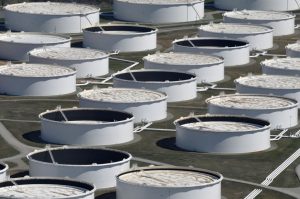
Houston — U.S. crude oil output grew in July to near its pre-COVID peak in 2019, fueled by a record level of production from Texas, the top U.S. shale oil producer, the U.S. Energy Information Administration said on Friday.
U.S. crude production grew 0.7% to 12.99 million barrels per day (bpd) in July, its highest since November 2019, when production hit a peak of 13 million bpd.
Oil output from Texas, New Mexico and North Dakota all rose. Texas grew 1.3% to 5.6 million bpd in July, its highest on record, North Dakota’s output rose 1.2% to 1.2 million bpd, and New Mexico’s oil climbed 0.6% to 1.8 million bpd.
The additional supplies come as Saudi Arabia and Russia this month extended their voluntary oil cuts to the end of the year, pushing up global oil prices as supplies tightened.
U.S. crude prices on Friday were trading over $91 per barrel, spurring hopes of additional production gains.
Meanwhile, U.S. crude and petroleum products supplied, a proxy for demand, fell by 592,000 bpd, in July to 20.12 million bpd, the lowest level since April.
Finished motor gasoline fell by 266,000 bpd in July to 9.01 million bpd, the lowest since April, EIA added.
Gross natural gas production in the U.S. Lower 48 states rose 0.7 billion cubic feet per day (bcfd) to a record 115.6 bcfd in July from 114.9 bcfd in June, according to EIA’s monthly 914 production report.
That topped the prior all-time high of 115.2 bcfd in May.
In top gas-producing states, monthly output in July rose 0.6% in Texas to a record 34.2 bcfd but slid 1.1% in Pennsylvania to 20.7 bcfd.
That topped the prior all-time high of 34.0 bcfd in Texas in June and compares with a record 21.9 bcfd in Pennsylvania in December 2021.
Reporting by Arathy Somasekhar and Laura Sanicola in Houston and Scott DiSavino in New York; Editing by David Gregorio and Marguerita Choy – Reuters
This article was originally posted at sweetcrudereports.com
Be the first to comment